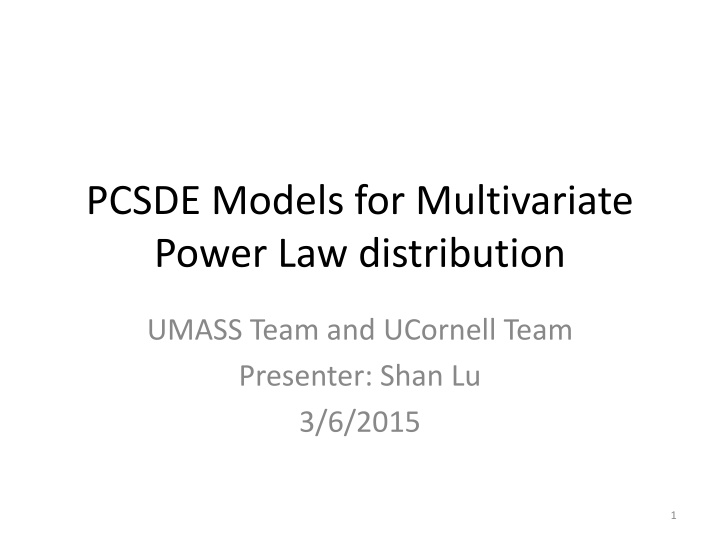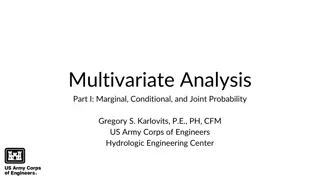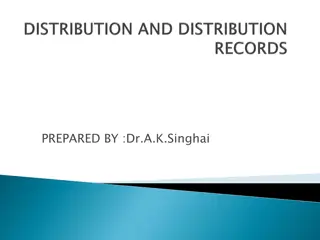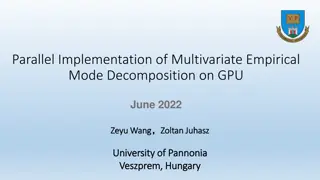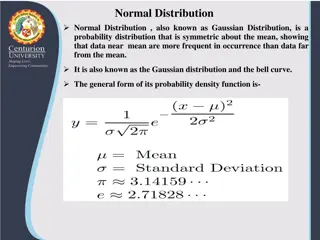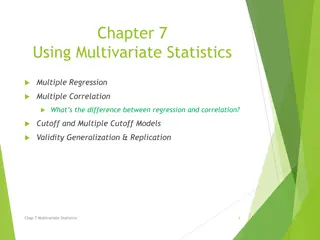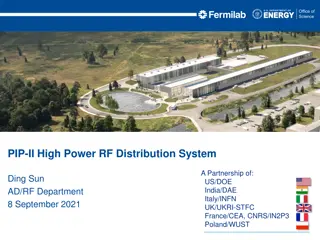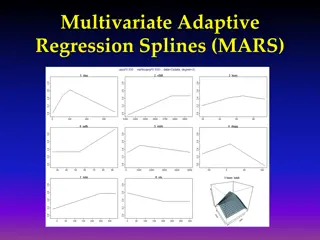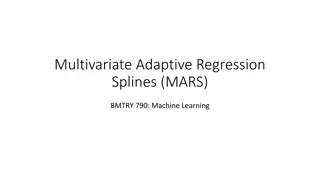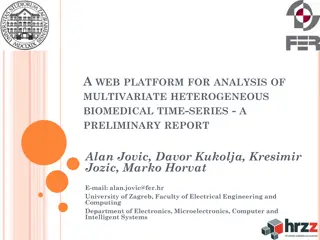PCSDE Models for Multivariate Power Law Distribution
Research on multivariate power law distribution in real-world data, Pareto distribution, and PCSDE formulations with shared Poisson counters. Understand models for correlated bivariate power law distribution and more. Dive into the mathematical principles and applications in various fields."
Download Presentation

Please find below an Image/Link to download the presentation.
The content on the website is provided AS IS for your information and personal use only. It may not be sold, licensed, or shared on other websites without obtaining consent from the author.If you encounter any issues during the download, it is possible that the publisher has removed the file from their server.
You are allowed to download the files provided on this website for personal or commercial use, subject to the condition that they are used lawfully. All files are the property of their respective owners.
The content on the website is provided AS IS for your information and personal use only. It may not be sold, licensed, or shared on other websites without obtaining consent from the author.
E N D
Presentation Transcript
PCSDE Models for Multivariate Power Law distribution UMASS Team and UCornell Team Presenter: Shan Lu 3/6/2015 1
Multivariate Power Law in Real World Data 2-Dimensional data Power law distributed margins. Independent or correlated in-degree and out-degree. Model to fit the real data? 2
Multivariate Pareto Distribution Multivariate Pareto distribution II, Joint CCDF Marginal CCDF Tail dependence coefficient (2D) 3
Multivariate Pareto Distribution Classical Pareto Tail dependence coefficient is not 0; Same shape parameters for all univariate margins. MP(II) of Asimit et al1 Shape parameters are not necessarily the same; Asymptotically independent. 1A. V. Asimit, E. Furman, R. Vernic, On a multivariate Pareto distribution , Insurance: Mathematics and Economics 46(2010) 308 - 316 4
PCSDE Model for Multivariate Power law PCSDE formulation Exponential Growth with Random Stopping PCSDE formulation 5
PCSDE Model for Multivariate Power law Independency or correlation between variables can be achieved by independent or shared Poisson counters. Marginal exponents are not necessarily the same. Monte Carlo Simulation Relationship to Generative Models Expected degree growth Rebuilt generative model for real-world data 6
Bivariate PCSDE Model (1) 1. 2D SDE model with Shared Poisson Counter Independent growth processes. Life time of the two growth processes are controlled by a shared Poisson counter and two independent Poisson counters. 7
Bivariate PCSDE Model (1) Correlated bivariate power law distribution CCDF: Asymptotically independent: 8
Bivariate PCSDE Model (2.1) 2.1 Shared Poisson model with Markov on-off modulation Makrov on-off process is on : original shared Poisson counter model; Makrov on-off process is off : independent Poisson counters are shut off. 9
Bivariate PCSDE Model (2.1) 2.1 Shared Poisson model with Markov on-off modulation Tail behavior: 10
Bivariate PCSDE Model (2.1) 2.1 Shared Poisson model with Markov on-off modulation With , we have , which implies If and , then close to 0, the tail dependence coefficient goes to 0 slowly. Fit data when infinity value does not happen? 11
Bivariate PCSDE Model (2.2) 2.2 Shared Poisson model with Markov on-off modulation and resetting Reset the two variables whenever the state of the Markov on-off process changes 12
Bivariate PCSDE Model (2.2) 2.2 Shared Poisson model with Markov on-off modulation and resetting With , 13
Bivariate PCSDE Model (2.2) Heat map comparison Dataset Youtube Flickr arXiv Live Journal Tail behavior Dependent Independent Independent Independent 15
Bivariate PCSDE Model (3) PCSDE model with matrix exponentials , and are independent. , and are correlated. Marginal tail power law? What about the tail dependence? 16
Bivariate PCSDE Model (3) PCSDE model with matrix exponentials Simulation result for the marginal distribution 17
Bivariate PCSDE Model (3) PCSDE model with matrix exponentials Simulation result for conditional probability 18
Bivariate PCSDE Model (3) PCSDE model with matrix exponentials On going and future work: Computing the marginal tail Computing the joint tail Computing the tail dependence coefficient 19
